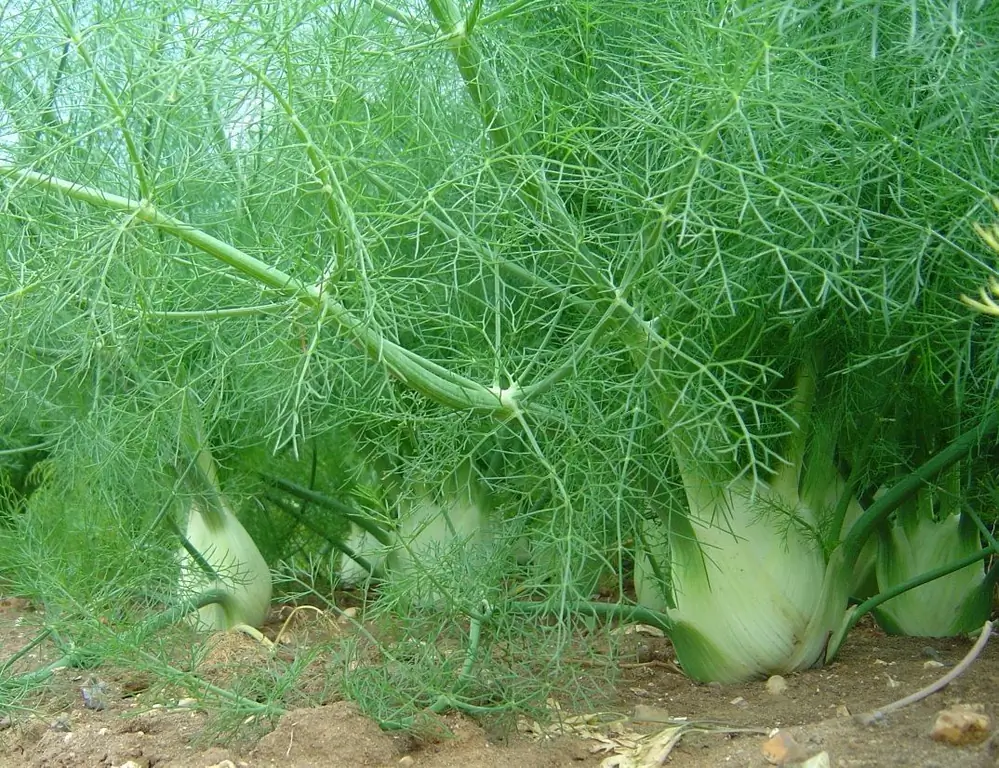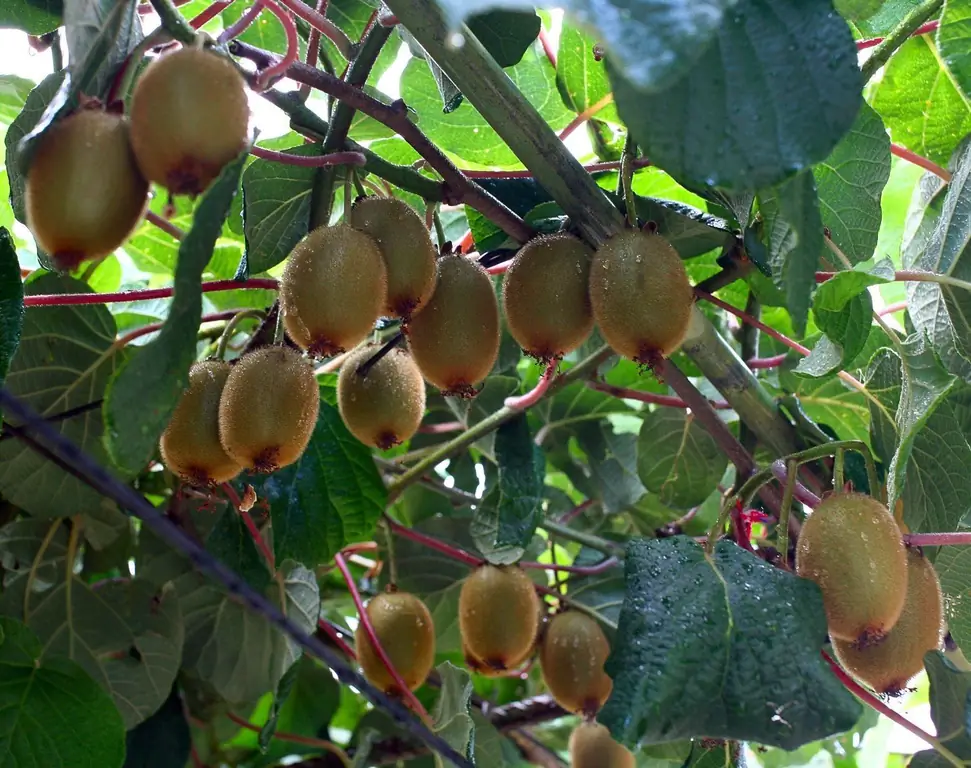
Table of contents:
- Author Bailey Albertson [email protected].
- Public 2024-01-17 22:26.
- Last modified 2025-06-01 07:32.
How to Grow Plumeria at Home: Growing Tips and Care

Growing plumeria at home is a difficult process, but the result is worth the effort. In the wild, it grows in South America and Asia. Propagating it by seeds right at home will allow you not only to expand your flower garden, but also to try yourself as a breeder. But for growers who do not have sufficient experience, it is better to use seeds purchased in a store for growing. You can find full information about the features of growing and the rules of caring for this flower in our article.
Content
-
1 Plumeria at home - is it possible?
1.1 Photo gallery: what different types of plumeria look like
-
2 Reproduction by seeds
- 2.1 Preparing seeds for planting
- 2.2 How to choose a soil
- 2.3 Sowing seeds
- 2.4 Video: features of growing plumeria from seeds
- 2.5 Transplanting sprouts into new pots
- 2.6 Important notes
-
3 Care rules
- 3.1 Light and optimal temperature
- 3.2 How to water properly
- 3.3 Fertilizers
-
4 Pests and control of them
4.1 Table: fight against spider mites, depending on the degree of damage
Plumeria at home - is it possible?
Plumeria is a tropical tree from the kutrov family. Widely distributed in South America, Southeast Asia, Oceania, and Central America. In the wild, the tree grows up to ten meters, but at home it does not exceed 2 meters. Smooth, dark green leaves can sometimes be tinted red, gray or purple. Inflorescences are formed at the tops of the shoots, the flowers are usually large and have 5 petals. Coloring can be very different and unusual shades: from white to bright pink and red. In a city apartment, plumeria blooms in summer, while in the wild, bloom lasts almost all year.
There are a lot of varieties of plumeria. Some seed shops offer more than 40 to choose from. But the following types of plumeria are most often grown at home:
- Plumeria Blunted. The flowering of this variety is very lush, the flowers are white with a bright yellow core.
- Red. It is a shrub with large oblong leaves, dense, fleshy shoots. The flowers are small, of a beautiful crimson color.
- Plumeria White. The shoots of this plant look like succulent ones, the leaves are quite elongated, have an ovoid shape. Flowers are located in inflorescences at the tops of the shoots. The color of the petals is white, the middle is yellow. The flowers have an almond scent.
- The black tiger is a variety with large flowers, the size of each bud reaches 10 cm. The color of the petals of this plumeria is deep purple, the shape of the flowers is very similar to an orchid.
Photo gallery: what different types of plumeria look like
-

Plumeria Black Tiger -
Black Tiger
-

Plumeria White - Plumeria White
-

Plumeria Red - Plumeria Red
-

Plumeria Blunted - Blooming Plumeria Blunted
Seed propagation
Reproduction of plumeria by means of seeds is an exciting process. In nature, this method is the only one for all varieties of plumeria. When propagated at home by seed, it is very likely that new trees will not retain varietal characteristics. No one can tell what shade the leaves and flowers of the new tree will be. It turns out that each new plumeria you grow is one of a kind and unique.
The seed reproduction process is long and painstaking. They ripen for quite a long time - 8-10 months. When the pods are dry it is a sure sign that the seeds are ready to plant. In nature, the pods fall to the ground on their own, at home you have to pluck them. It will take several years (usually 3-4 years) to see the result of your labors and wait for flowering. For experimenting with breeding new varieties, tree seeds with pink and reddish flowers are best suited.
Preparing seeds for planting
Gloves are required when working with plumeria, as the juice is poisonous and can burn the skin. The seeds must be carefully removed from the pod without damaging the winglet, which is an important part of them. If the seeds are ripe, then a root can be seen on them. In some varieties of plumeria, the pods explode, so it makes sense to put a paper bag or a thin cloth bag on the tree.

Plumeria seeds need soaking
After the seeds are harvested, they should dry for 3-4 hours in warm and dark conditions. If they are purchased, you no longer need to dry them.
To prepare the seeds for planting, a number of steps should be followed:
- Spread the seeds carefully on damp gauze (any clean cotton cloth will do).
- Cover the top with the same fabric.
- Sprinkle with water.
- Place them in a homemade greenhouse, such as a bag or plastic box with a lid. Put all this on the window so that the seeds are in the sun for 6-8 hours. If this is not possible, hold the seeds by the battery.
- The seeds should lie in a damp cloth for a day, do not forget to periodically spray the gauze if it dries up.
- To disinfect the seeds, before heating, you can dip them in a solution of potassium permanganate for 10-15 minutes.
Excellent results are obtained by preliminary soaking in warm water with the addition of growth stimulants. To do this, you can use the following compositions:
- Add 3 drops of Epin-extra to 100 ml of liquid.
- Dissolve 1 tablet of Immunocytophyte in a teaspoon of water.
- Dilute a few drops of Silk in 100 ml of water.
In principle, you can use any commercially available substances, diluting them according to the instructions.
How to choose a soil
Plumeria loves loose soil, this allows the roots to receive more oxygen. The most suitable soil for her is sod. You can mix store-bought soil with peat and sand in a 2: 1: 1 ratio.
If you choose soil from your site, you need to prepare it more carefully. Despite the fact that plumeria is almost not susceptible to diseases and pests, bacteria, fungi and parasite eggs can be found in the garden soil. For disinfection, the soil can be spilled with boiling water or with a solution of potassium permanganate. Heating in an oven or microwave are equally successful methods of disinfection.
Sowing seeds

Plumeria sprouts should create a greenhouse
After the time required for soaking has passed and the soil is prepared, you can start sowing. No special tools are required for planting seeds. You should stock up on:
- containers for plumeria, preferably wooden (they should be large enough in width and height);
- film or glass;
- spray bottle.
In the process of sowing, a number of rules should be observed:
- The soil should be poured at least 5 cm thick.
- Do not deeply deepen the seeds, the wing should remain above the ground. It is important to ensure that it is perpendicular to the surface.
- The distance between the seeds is 5-7 cm.
Cover the drawer with plastic wrap and place in a warm place. Plumeria will need a lot of light. In spring and summer, a sunny window sill is suitable; in winter, place a container with planted seeds under fluorescent lamps. The temperature should be at least 23-25 ° С. Draft is the enemy of future seedlings, the seeds will begin to rot. There is no need to clog the seeds in the greenhouse, they need to breathe. Air the seed container for half an hour every day. This procedure will also prevent the formation of mold on the soil. The soil should not be dry, spray the surface constantly so that it does not dry out.
The first shoots may appear within a week. But don't worry if it doesn't. Some varieties take longer to germinate - within 20-25 days. If after a month nothing has sprung up, then, most likely, shoots can no longer be expected. A winglet is an excellent indicator of sprout development. If roots begin to sprout from the seed, it will tilt towards the ground.
It is important for novice breeders of plumeria to know that in the process of growing from seeds, there is another important stage to go through. As soon as shoots appear above the soil surface, the winglet (or skin) must be carefully removed. If this is not done, the leaves may rot. Before removing the winglet, dampen it for two hours (for example, dampen a cotton pad and attach it to the winglet) so that it softens and comes off easily. You can use a toothpick or tweezers.
Video: features of growing plumeria from seeds
Transplanting sprouts into new pots
Seedlings can be dived when real leaves appear. It is most convenient to transplant small plumeria into peat pots. With subsequent transplantation into larger containers, the pots will simply dissolve in the ground over time, becoming a fertilizer. Some growers do not approve of the transplant and believe that the plumeria should be immediately planted in the container, where it will grow all the time. This avoids injury, but the plant will require more complex maintenance.
The grown plumeria needs regular watering and fertilizing with fertilizers that contain nitrogen. It should not be exposed to direct sunlight: there is enough diffused light. Be careful with water, you cannot pour plumeria - the roots will rot. If this happens, the tree can be reanimated. To do this, carefully remove the plumeria from the soil and cut off the damaged roots. Plant it back in a clean pot of fresh soil.

Diffused light is one of the conditions for successful cultivation of plumeria
For constant hydration, you can put a container of water next to the flower. Another option is moss in a pallet, such as sphagnum. This marsh moss accumulates and retains moisture well.
In the early years, plumeria should be transferred once a year to deeper pots. Subsequently, after flowering, the plant should be replanted once every 2-3 years.
Important notes
- Indoor plumeria varieties have characteristics that distinguish them from other plants. You need to know and remember about the features of the plant so as not to harm him or yourself.
- Plumeria is poisonous. Therefore, do not place it in rooms where animals and small children can reach the plant. Plumeria, thanks to the poison, is protected from almost all pests. An exception is the spider mite.
- You can only work with the plant with gloves. Avoid contact with the poisonous juice on the skin and mucous membranes, if this does happen, wash the affected area with plenty of water. Not only juice is poisonous, but also fruits. You cannot eat them - it is important to explain this to the children.
- In winter, plumeria leaves fall off, this is completely normal, you should not worry. The rest period can last up to one and a half months. Although the flowers are not pollinated, they can differ in color even on the same tree.
Care rules
In the first two years, plumeria will require increased attention. With proper care, by the end of this period, the tree will grow about a meter in height.
Light and optimal temperature
Plumeria is a tropical plant, and therefore very demanding for heat, it is optimal to grow it at 25-28 ° C. The tree does not tolerate drafts and temperature changes. You need a lot of light, but by no means direct sunlight, only diffused light. The sun's rays harm the leaves by burning them.
How to water properly
Watering is highly dependent on the weather outside the window. In the spring and autumn, it is enough to water the plumeria as the soil in the pot dries up. In winter, the tree "sleeps" and requires almost no watering, but in summer, plumeria must be watered every day.
Fertilizers
The first feeding is possible already at a period of 40-50 days of plant life. Young plumeria need a lot of nitrogen to grow better. In the future, the tree should be fed every 2 months.
After the first year of plumeria life, feeding is carried out as follows:
- Throughout the spring, during the period of leaf formation, plumeria will need nitrogen, phosphorus and potassium in equal amounts every two weeks.
- If the seedlings are not yet a year old, they are far from flowering, therefore, fertilizers with phosphorus are needed in May and June, which stimulates growth. If the tree is already mature and ready to bloom, then the spring feeding should not be stopped. But in this case, the proportions change in decreasing order: potassium, phosphorus, nitrogen.
- Fertilize plumeria until the end of September. In addition to store-bought fertilizers, silt from the bottom of a river or lake is suitable (in case there is a reservoir nearby).
- During the rest period, feeding is stopped.
Pests and the fight against them
Plumeria is poisonous, which allows it to be protected from pests and diseases. We can say that a tree has only one enemy - a spider mite.

Plumeria's worst enemy is the spider mite
This attack in the early stages is defined as thin threads on the leaves and small dots at the bottom of the plate. If the disease is neglected, the entire plant is literally covered with cobwebs and ticks. The sight is not for the faint of heart. The fight against a tick largely depends on the stage of its development.
Table: the fight against spider mites, depending on the degree of damage
| Stage of development of the disease | Ways to fight |
| No tick, prevention | Spraying the plant regularly. |
| initial stage |
|
| Strong development | Ticks don't like UV light. But, since direct sunlight can harm the delicate leaves of the tree, use a fluorescent lamp to illuminate the leaves from below (this is where ticks like to settle). |
| Too strong development of the pest | If nothing helps against the pest, spray the tree with solutions of drugs, the choice of which is now very wide: Fitoverm, Actellik, Karfabos, Zolon, etc. These funds have only one drawback - the mites quickly get used to them, therefore, to completely remove the pests, you need to alternate drugs. |
The process of growing plumeria from seed to adult tree is interesting and exciting, and planting seeds itself does not require specific skills and complex devices. The plant is not capricious in everyday life and, subject to the instructions, will delight you with flowering for a long time. In addition, by growing plumeria yourself, you can be sure that your specimen is unique and inimitable.
Recommended:
Growing Fennel From Seeds (including Vegetable Seeds) At Home And In The Garden + Photo And Video

Practical tips for growing fennel from seed. Fennel species, varieties suitable for growing in the middle lane
How To Grow Kiwi (at Home From Seeds, Seeds, Etc.) + Video And Photos

Step by step instructions for growing kiwi at home. Growing from seeds and seeds, taking care of seedlings and plants during the growth period
How To Grow Corn In The Country From Seeds Or Through Seedlings: When To Plant, How To Care And Other Features

Corn, features of its cultivation by seeds and seedlings, instructions for planting and care. List of popular varieties. Features for different regions. Video
How To Plant And Grow Cucumbers In The Open Field: Plant Seeds, Properly Care For Plants (water, Form, Tie Up)

What varieties and hybrids of cucumbers can be grown in the open field. Features of planting seeds and seedlings. Choice of place and timing. The nuances of care and formation
How To Grow A Tomato Tree At Home: Octopus, Tsifomandra And Other Varieties, Reviews, Photos And Videos

Tomato tree (octopus, or tamarillo): what is it, where it grows, how not to be confused with an ordinary tomato. Varieties. Is it possible to grow on a plot in a greenhouse. Reviews. Video
